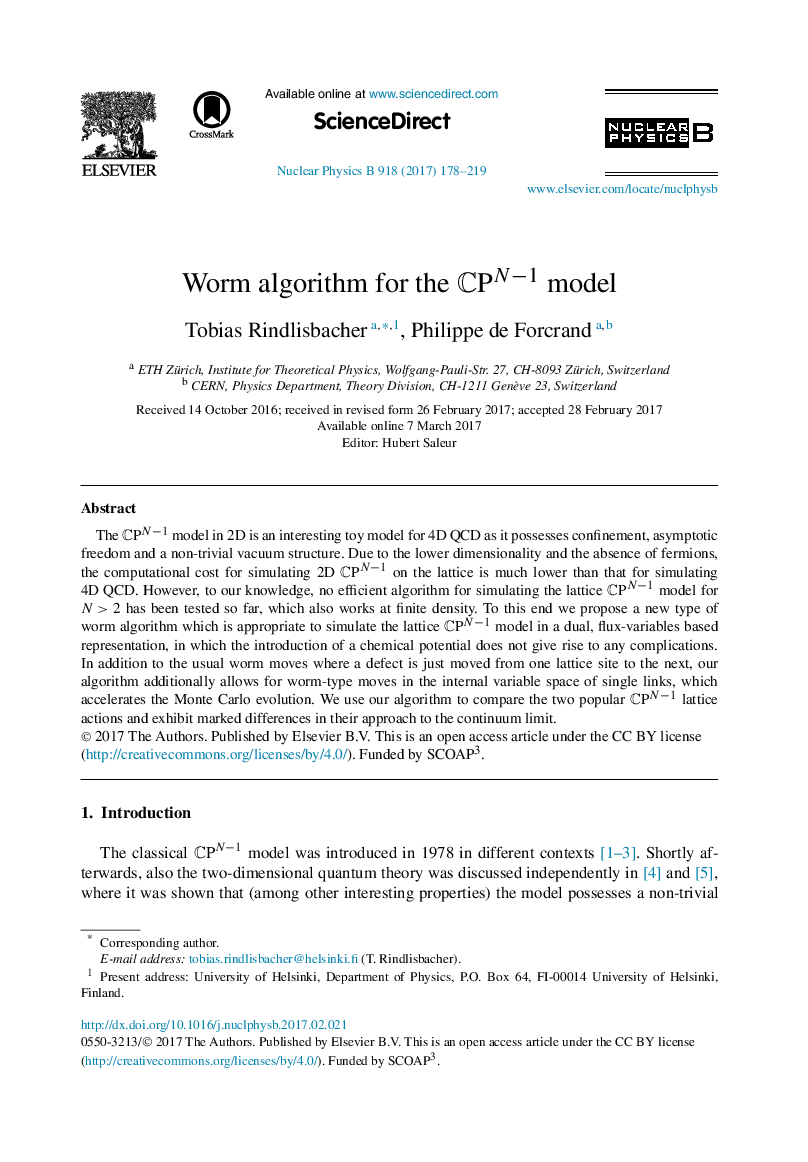| Article ID | Journal | Published Year | Pages | File Type |
|---|---|---|---|---|
| 5494467 | Nuclear Physics B | 2017 | 42 Pages |
Abstract
The CPNâ1 model in 2D is an interesting toy model for 4D QCD as it possesses confinement, asymptotic freedom and a non-trivial vacuum structure. Due to the lower dimensionality and the absence of fermions, the computational cost for simulating 2D CPNâ1 on the lattice is much lower than that for simulating 4D QCD. However, to our knowledge, no efficient algorithm for simulating the lattice CPNâ1 model for N>2 has been tested so far, which also works at finite density. To this end we propose a new type of worm algorithm which is appropriate to simulate the lattice CPNâ1 model in a dual, flux-variables based representation, in which the introduction of a chemical potential does not give rise to any complications. In addition to the usual worm moves where a defect is just moved from one lattice site to the next, our algorithm additionally allows for worm-type moves in the internal variable space of single links, which accelerates the Monte Carlo evolution. We use our algorithm to compare the two popular CPNâ1 lattice actions and exhibit marked differences in their approach to the continuum limit.
Related Topics
Physical Sciences and Engineering
Mathematics
Mathematical Physics
Authors
Tobias Rindlisbacher, Philippe de Forcrand,
